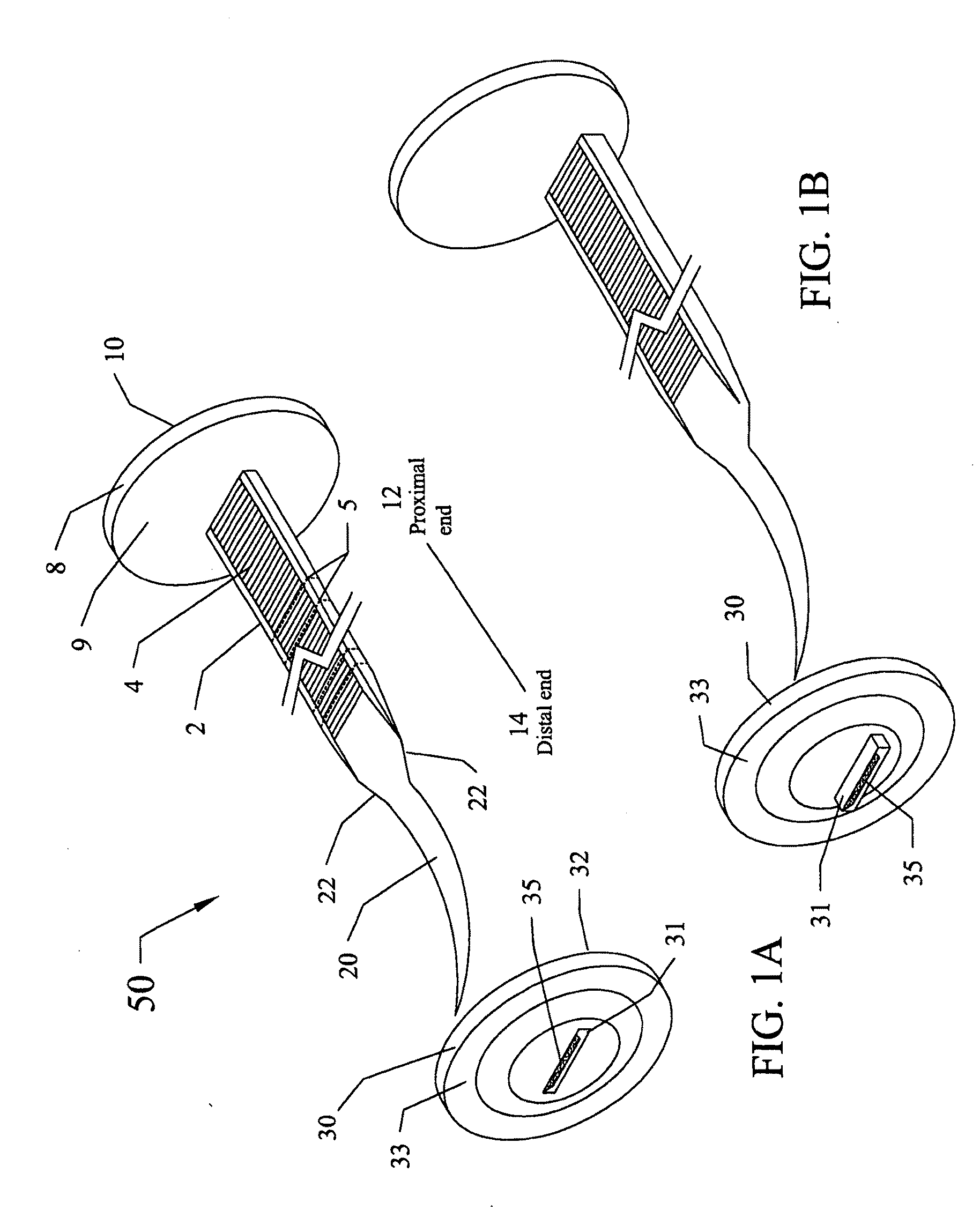Devices and Methods for Adjustable, Knotless Tissue Approximation
a knotless tissue and approximation technology, applied in the field of knotless tissue approximation devices and methods, can solve the problems of considerable tissue tension, particularly difficult step, and generalized challenge of intracorporeal suturing by some surgeons, and achieve the effect of reducing the pressure on the tissues around the shank, reducing the pressure, and distributing tension
- Summary
- Abstract
- Description
- Claims
- Application Information
AI Technical Summary
Benefits of technology
Problems solved by technology
Method used
Image
Examples
Embodiment Construction
[0034]The subject invention provides devices and methods for tissue approximation or for sealing or plugging openings in tissues that cannot, or should not, be approximated. Advantageously, the tissue approximation devices of the subject invention can be used with existing surgical tools and are well-suited for endoscopic surgeries. As described herein, the devices of the subject invention are particularly useful for modest tissue-tension repairs. Specifically, exemplified herein is the use of the novel tissue approximation devices of the subject invention for hernia repairs.
[0035]The devices of the subject invention eliminate (or at least reduce) the need for sutures and the associated knot-tying, and allow for accurate control of the pressure applied to approximated tissues. These devices can also reduce or eliminate failure of tissue approximations and the associated need for additional surgeries to re-approximate damaged tissues.
[0036]In a specific embodiment, a device of the su...
PUM
 Login to View More
Login to View More Abstract
Description
Claims
Application Information
 Login to View More
Login to View More - R&D
- Intellectual Property
- Life Sciences
- Materials
- Tech Scout
- Unparalleled Data Quality
- Higher Quality Content
- 60% Fewer Hallucinations
Browse by: Latest US Patents, China's latest patents, Technical Efficacy Thesaurus, Application Domain, Technology Topic, Popular Technical Reports.
© 2025 PatSnap. All rights reserved.Legal|Privacy policy|Modern Slavery Act Transparency Statement|Sitemap|About US| Contact US: help@patsnap.com



